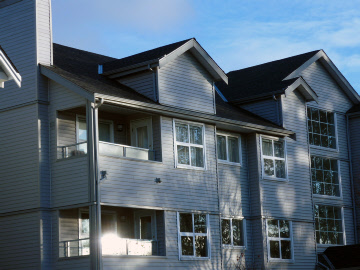How to Inspect a Commercial Roof
March 23rd, 2015
The roof is an integral component to any building or structure; they provide protection from harsh weather and stability and strength to the entire building. Plus, roofs are among the most expensive aspects of a building to repair or replace which is why a regular maintenance program is incredibly important for keeping your roof in excellent condition. If you’re wondering how to inspect a commercial roof, you’ve come to the right place. Let’s take a brief moment to talk about the two main types of commercial roof and then what you’re looking for in a commercial roof inspection.
Types of Roof
In the simplest terms possible, there are two main types of commercial roof: flat and sloped. Indeed, you might say there are two types of roof full stop. Nevertheless, maintenance and care for these types of roof will vary slightly. Flat roofs tend to be more susceptible to leaks and surface damage caused by standing water. When inspecting a flat roof, you want to look for damage to fixtures, holes or punctures in the roofing surface, water pooling, or blisters in the roofing membrane. It is especially important to check gutters and drains to ensure there are no blockages while also inspecting flashing and seams for corrosion and wear and tear. You should also check roofing structures for organic growth as moss, algae, and fungus can promote the degradation of the roof.
Sloped roofs constructed with shingles, tile, slate, or metal also need to be inspected regularly. Shingles should be inspected for granular loss but also for tears, curling, or bending. This type of damage in shingles indicates they must be replaced in order to maintain the integrity of your roof.
If your sloped roof features tiles or slate, you want to make sure these components are smooth and free of chips or cracks. It’s best to detect damage as early as possible as you’ll likely be able to replace just a few tiles or slates to prevent further damage to surrounding roof components. Given enough time for the damage to progress, you may need to replace the entire roof which is a costly endeavour.
With respect to metal roofs, you want to look for signs of corrosion such as rust, but also look for loose or bent panels. Check that seams are uniform and water-tight.
Essential Aspects of Inspection
No matter what type of commercial roof you have on your building, there are three essential aspects of any inspection. First, you want to look for visible damage and debris. All debris needs to be removed from your roof to prevent structural problems. Once debris has been removed, inspect your roof carefully and repair any damage.
Next, you want to inspect exterior structural components of your roof. This includes chimneys, vents, fascia, drip edges, flashing, and decking. All these components need to be free of damage, rust, and rot. Leaks are common around these roofing fixtures so you also want to ensure that mortar and caulking is in good condition.
Finally, inspect interior roofing components for signs of leaks or other visible problems. If you find mold, mildew, or rot on roof trusses or other interior structures, there may be significant leaks in your commercial roof.




